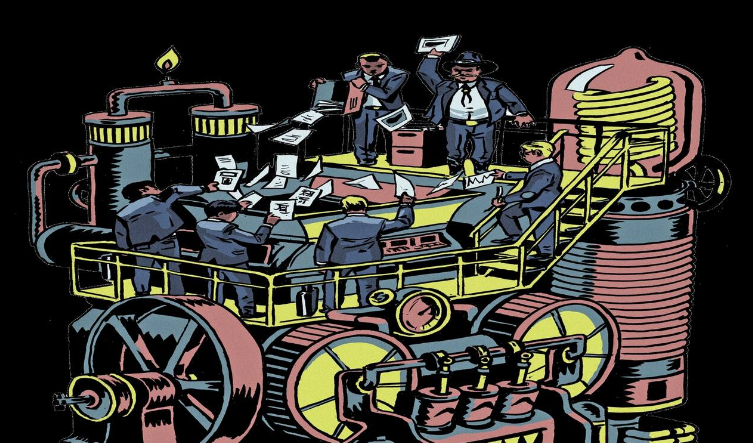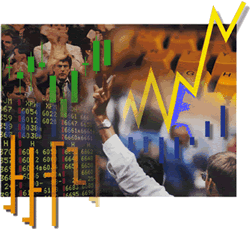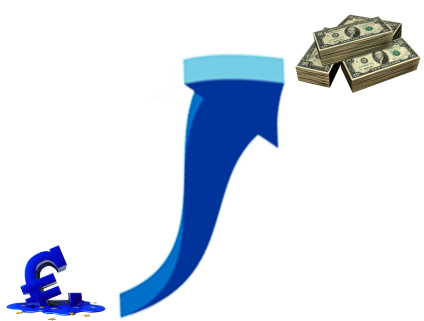Leverage
First of all, the levers of this money machine:
Foreign exchange rates are usually represented with four decimal places. The last digit is called a point or “pip”. One pip corresponds to 0.0001 of the respective exchange rate. The only exception is the USD/JPY rate, where a pip is only 0.01. International billing is in USD.
In order to participate in Forex trading, a security deposit, called a margin, must be deposited.

This creates leverage, which can usually be 1:100, sometimes 1:200 or even 1:400, depending on your risk tolerance. In addition, profits can be made just as easily and quickly in falling markets as in rising ones. The smallest trading unit is a lot, value: $100,000. However, if the market does not move in the desired direction, the leverage now works against the investor, i.e. the margin is “used up” after a price change of 0.25% (1:400), or 0.5% (1:200) or 1% (1:100) and a margin call arises. . A new security deposit is therefore required to maintain the position. Otherwise it will be liquidated.
This important financial instrument is of enormous importance, especially when it comes to the need to protect existing assets against losses caused by international turbulence.
See the column after next: → Practical example
“Real” hedging
Security measure against currency risks
As the name suggests, hedging means building a protective wall against external threats, a “hedge”.

This instrument is particularly indispensable for owners of foreign assets: sight deposits in banks as well as real estate, metal accounts as well as extensive stock holdings.
Thanks to the leverage effect already described, even enormous values can be “insured” cheaply. Viewed this way, a hedge is insurance without insurance.
World's largest market
While reading this article,
There has already been a lot of movement in foreign exchange day trading: an estimated $44 million! (No, not all the time. Per second!) Currently there is an average of $2,100,000,000,000 swirling around the globe every day. More than the entire German national debt. We would be happy to provide you with more information at any time about this extremely lucrative trillion-dollar business, in which more sales are made in a single day than on all the world's stock exchanges combined, including Wall Street and NASDAQ, in the entire month.
→ Inquiry (FOREX)
(Interbank) foreign exchange trading

Superfluous in Forex trading: trading floors.
This machine runs 24 hours a day. Maintenance free. Even on weekends. A particular advantage of foreign exchange trading is its independence from stock exchange opening times; Changes in the market can be responded to 24 hours a day, 7 days a week. There is no physical trading venue and no central exchange.
It operates via an international electronic network of banks, institutions and traders. Ampex Holding Corp is also part of this network.
Forex trading begins every day in Sydney, then Tokyo takes over, followed by London and finally “ends” in New York. [Actually, Wellington, New Zealand is 2 hours ahead of Sydney, but a virtual zero point has to be set somewhere. However, in a 24-hour trade this is not so important.]
Earn on the falling euro/dollar
Practical calculation example:
An increase in the value of the Dollar against the Euro is expected:

In order to be able to trade $1,000,000, a margin of $10,000 is deposited and 10 contracts of $100,000 each are sold and the Dollar is bought at the same time. If the value of the Dollar increases by $0.01 (e.g. from 1.10 to 1.11) and a leverage of 1:100 is used, the value of the sell contract increases by 1%, i.e. by $10,000 . This results in a profit of 100% of the initial deposit.
(In the opposite case, you sell the Dollar and at the same time buy the Euro and thus hope that the Dollar will fall; in our example, you can offset the Euro at 1.09 against the Dollar when closing out the position.) A Euro asset of 1,000,000 can therefore be hedged against a rising Dollar with a margin of 10,000.
If the Dollar falls, the margin is lost, but the value of the Euro assets increases to the same extent. *
* Not included: transaction costs+commission, approximately $240. (Even these are neutralized if in the "real world" there are only about 975,000 assets on the Euro side.)
According to a study by Forex Education, 73% to 95% of all customers lose money. However, keep in mind that this is only an estimate as the loss percentage depends on many factors such as the size of the trade, risk management and the volatility of the market.
However, there are many resources online that can help you improve your trading strategy and minimize risk. We achieved an average return of 18.2%/p.a. over the past 40 years.






























